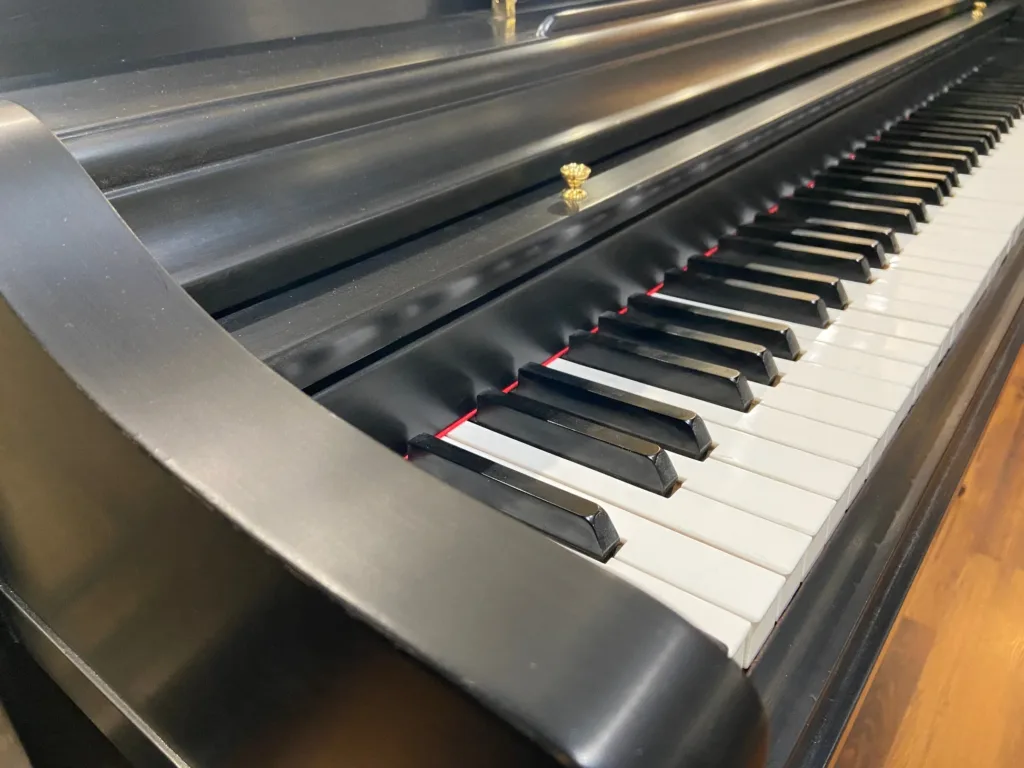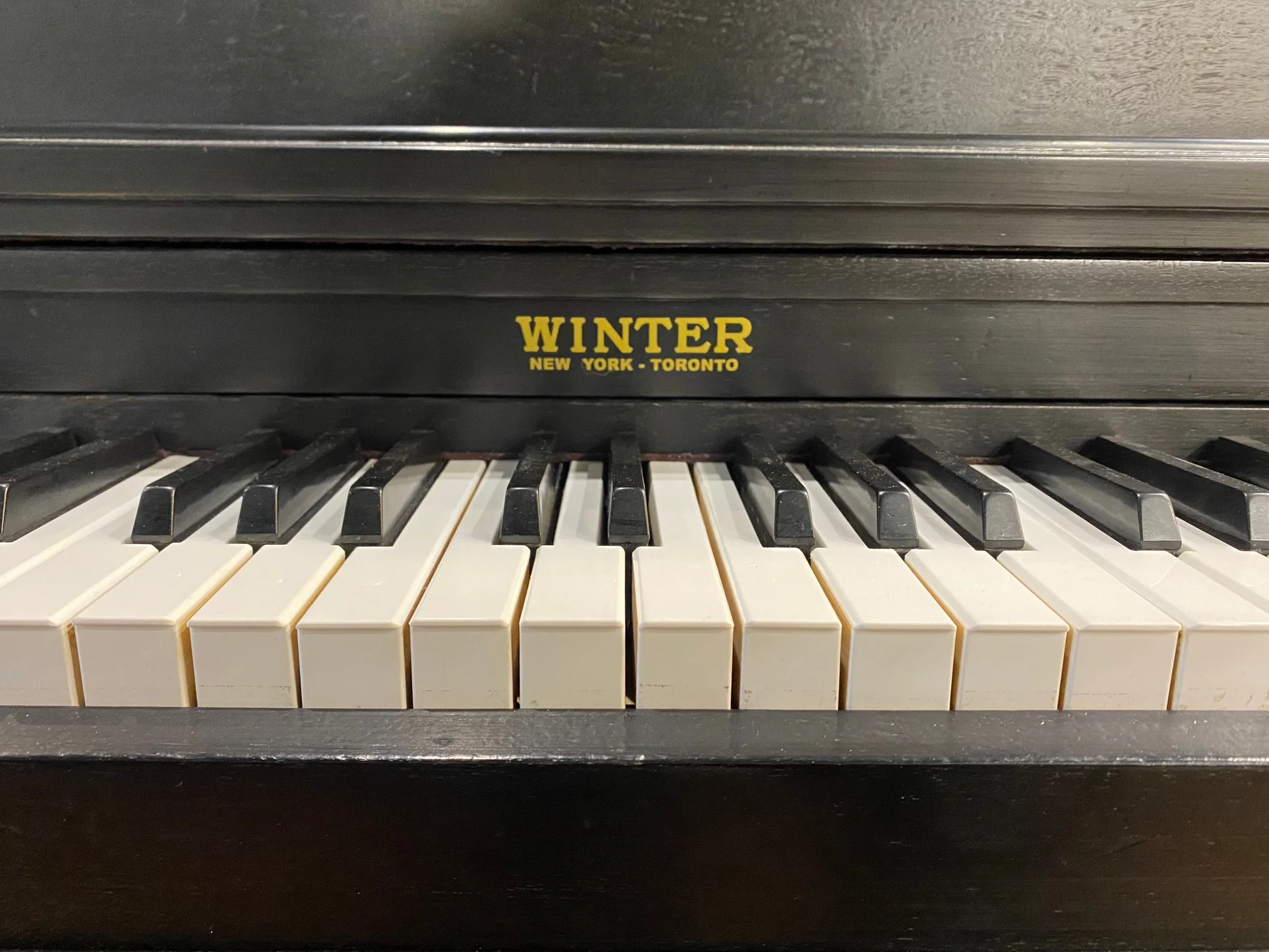Winter is a beautiful season filled with cozy fires, hot cocoa, and holiday cheer. But for us musicians, it also brings extra challenges when it comes to keeping our beloved instruments in top shape. As an experienced pianist, I understand the importance of proper piano maintenance, especially during the harsh winter months. That’s why I’ve compiled this comprehensive guide on essential winter upright piano care tips that will help you keep your instrument sounding and looking its best all season long.
So if you’re a proud owner of an upright piano or just starting out as a beginner player, this article is for you. From protecting against dry air and temperature changes to preventing rust and other damages caused by cold weather – we’ll cover it all. Get ready to learn how to properly care for your winter upright piano as we explore some expert techniques together. Trust me; your instrument will thank you!
So, winter upright piano care?
As the cold weather approaches and our homes become filled with cozy blankets and warm drinks, it’s important to remember that our winter routines should also include caring for our musical instruments. In particular, upright pianos require special attention during the colder months to ensure they stay in top shape.
First and foremost, it is crucial to keep your piano away from any sources of heat such as radiators or fireplaces. The drastic changes in temperature can cause the wood to expand and contract, leading to potential damage. It’s best to place your piano in a room with consistent temperature and humidity levels.
Speaking of humidity, this is another key factor in maintaining your instrument during winter. Dry air can cause the wood of your piano to shrink or crack, affecting its sound quality and overall condition. To combat this issue, consider investing in a humidifier specifically designed for pianos or placing a bowl of water near the instrument.
Regular tuning is essential for any piano throughout the year but even more so during winter when temperature fluctuations can affect its pitch. It’s recommended to have your piano tuned at least twice a year by a professional technician.
In addition to these preventative measures, there are some simple day-to-day habits you can adopt to keep your upright piano in top shape during winter. Avoid placing anything on top of the keys when not playing as this can put unnecessary pressure on them. Also be mindful of spills or excess moisture around the instrument as they can seep into sensitive parts like strings and pedals.
Lastly, if you plan on moving or storing your upright piano during winter months (such as for renovations), make sure it is done carefully by professionals who understand how delicate these instruments are.
By following these tips and staying vigilant about proper care for your upright piano during winter months, you will be able enjoy beautiful music all season long without worrying about potential damages or malfunctions caused by harsh weather conditions. Your instrument will thank you!
Understanding the Impact of Winter Elements on Your Upright Piano
When winter arrives, the elements can have a lasting effect on your upright piano. Cold temperatures and low humidity are particularly notable culprits. As the air dries out, so does the wood in your instrument. This can lead to cracks and warping, compromising both its structural integrity and sound quality. Imagine playing a note only to hear it waver unexpectedly—quite annoying, right? The strings inside may also contract due to temperature changes, causing them to become misaligned or break entirely.
To safeguard your precious piano from these hazards, consider taking some preventative steps:
- Proper Placement: Keep it away from direct drafts and windows.
- Humidity Control: Use a humidifier in the room where you keep your piano.
- Covers: A good-quality cover can help insulate against sudden temperature shifts.
In essence, treating your upright piano with care during winter not only saves you future repair costs but also ensures your music continues to resonate beautifully year-round.
Maintaining an optimal environment for your piano requires more than just placing it in a cozy corner away from harsh winds. Regular tuning is equally vital during the colder months since fluctuating conditions affect how well each string holds its pitch. You might think that tuning once or twice a year suffices; however, winter demands special attention because of these unpredictable changes.
Ensuring stable indoor conditions by investing in climate control systems will go far in preserving that rich tone you’re fond of hearing every time you sit down to play. After all, nothing beats having an instrument ready at any moment without worrying about sudden squeaks or flat notes interrupting what could be magical musical moments!
Selecting the Best Location for Your Upright Piano During Winter
Finding the perfect spot for your upright piano during winter can make a world of difference in keeping its sound rich and resonant. Imagine cozying up to play on a chilly evening, only to find that your piano has gone out of tune or developed mysterious creaks. The secret often lies in where it’s placed within your home.
Firstly, avoid placing the piano near windows or exterior walls where it may be exposed to fluctuating temperatures and moisture levels. These changes can cause the wood to expand and contract, leading to tuning issues or even structural damage over time. Instead, look for an interior wall, preferably one that doesn’t share space with a frequently used fireplace or heating vent.
• Consider areas away from drafts
• Choose rooms with stable humidity
• Keep it clear from direct sunlight
Additionally, maintaining steady humidity levels is crucial as dry air can wreak havoc on both wooden components and felt hammers inside the instrument. Investing in a room humidifier might be worth considering if you live in an especially arid region during colder months. Always aim for a location with consistent conditions so that each note remains just as beautiful as when you first played them.
By giving some thought into selecting this ideal spot, not only do you safeguard your investment but also ensure every piece played resonates beautifully throughout those frosty days!
Read also: value of piano

How to Safeguard Your Upright Piano from Dry Air and Humidity Changes During Winter
Winter can be harsh on your upright piano, with dry air and fluctuating humidity levels posing a real threat. The first step in safeguarding your cherished instrument is to ensure it’s positioned away from direct sources of heat such as radiators or fireplaces. Extreme temperature changes can cause the wood to expand and contract, which might lead to cracks or warping. Using a room humidifier helps maintain stable moisture levels in the air, benefiting both your piano and overall living environment.
Another key aspect involves regular maintenance, especially during winter months. It’s wise to keep an eye on the humidity level where you store your piano—ideally between 40% and 50%. Investing in a hygrometer makes this task easier by providing accurate readings so you can adjust accordingly. Additionally:
- Use damp chasers: These devices help regulate internal humidity.
- Tune regularly: Fluctuations affect tuning stability.
- Cover it up: Use a piano cover when not in use for extra protection against dust and sudden drafts.
Implementing these measures ensures that your upright piano remains in pristine condition throughout winter’s chillier days. It also guarantees that when spring comes around, it’ll still sound just as enchanting as ever.
Preventing Rust, Cracks, and Other Damages on Your Piano During the Winter: Essential Maintenance Tips
Winter can be pretty harsh on pianos, and it’s not just because of the cold. The air tends to get drier, which can spell trouble for your beloved instrument. To keep it in top shape, you should humidify the room where you store your piano. A simple humidifier can work wonders by keeping the wood from drying out and cracking. This will also help prevent rust on metal parts like strings and tuning pins.
Consistency is key when it comes to temperature as well. Pianos dislike sudden changes; they much prefer a stable environment. So try to avoid placing yours near heating vents or fireplaces where temps can fluctuate wildly. Additionally, using a piano cover isn’t just for dust—it adds an extra layer of insulation against chilly drafts and dry air that could harm your instrument.
- Keep humidity levels between 40-50%.
- Avoid direct heat sources.
- Use a quality piano cover.
Regular tuning is another must-do; winter’s shifting conditions can affect pitch stability more than you’d think! Call in a professional tuner at least once during this season to check everything’s still sounding harmonious. And don’t overlook cleaning: gently wiping down keys with a slightly damp cloth keeps grime at bay without risking moisture damage.
Taking these steps ensures your piano stays melodious through winter’s bite—ready for many more seasons of music-making joy!
You may also like: Is the Yamaha APX600 good for beginners
Conclusion: Protecting the Longevity of your Instrument with Proper Winter Upright Piano Care
Oh, winter! It’s that time of year when everything seems to get a little cozier and the world feels like it’s wrapped in a warm blanket. But while we’re all busy enjoying our hot cocoa and holiday tunes, our beloved upright piano could be silently suffering from the cold. Winter care for your piano is crucial to ensure its longevity and keep those melodies flowing smoothly. The dry air caused by indoor heating can wreak havoc on your instrument, leading to cracked wood and misaligned keys.
A few simple steps can make a big difference:
- Keep it away from direct heat sources like radiators or fireplaces.
- Avoid placing it near windows where drafts might sneak in.
- Use a humidifier to maintain consistent humidity levels around 40-50%.
Tuning is another crucial aspect during these colder months. As temperature fluctuates, so does the tension in your piano’s strings, which can throw off its pitch. Scheduling regular tunings—ideally at least twice a year—ensures that your instrument stays in top shape even as Mother Nature does her thing outside.
Ultimately, vigilance pays off when caring for an upright piano during winter. Checking for signs of trouble early on allows you to address issues before they become costly repairs later down the line.
Your dedication ensures that every keystroke resonates with perfect harmony each season.

